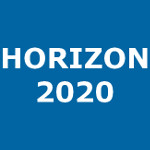Autonomic Nervous System Response to Heat Stress Exposure by Means of Heart Rate Variability
Kontaxis, S. (Universidad de Zaragoza) ; Bailon, R. (Universidad de Zaragoza) ; Rapalis, A. ; Brazaitis, M. ; Cernych, M. ; Lazaro, J. (Universidad de Zaragoza) ; Laguna, P. (Universidad de Zaragoza) ; Gil, E. (Universidad de Zaragoza) ; Marozas, V.
Resumen: In this study, a heart rate variability (HRV) analysis guided by respiration is conducted to assess changes in autonomic nervous system (ANS) regulation during pronounced heat stress induced by repetitive exposures to dry sauna in 13 young healthy subjects. The spectral power at the low frequency (LF) band [0.04, 0.15] Hz and at the high frequency band centered around the mean respiratory rate, estimated from ECG-derived respiration signals, are studied. The mean heart rate (HR), the total power of HRV, and the normalized LF power are also analyzed.Results show that mean HR and normalized LF power increase significantly after basal stage, not only during the sauna sessions, but also at the intermediate short rest stages and recovery phase after 30 min. A significant reduction in the total power of HRV during all sauna sessions is observed, while an increased power in LF band is shown only during recovery which might be related to improved cardiac function (increased cardiac output and reduced peripheral vascular resistance) after heat exposure. Respiratory rate does not change significantly during the protocol but a negative trend at stress stages may indicate a reverse reaction against an over-activation of the sympathetic branch. In conclusion, exposure to heat stress shifts sympathovagal balance of ANS toward sympathetic dominance that increases HR and diminishes HRV.
Idioma: Inglés
DOI: 10.23919/CinC49843.2019.9005474
Año: 2019
Publicado en: Computing in Cardiology 46 (2019), [4 pp]
ISSN: 2325-8861
Factor impacto SCIMAGO: 0.296 - Computer Science (miscellaneous) - Cardiology and Cardiovascular Medicine
Financiación: info:eu-repo/grantAgreement/ES/CIBER-Ibercaja-CAI/IT 16-18
Financiación: info:eu-repo/grantAgreement/ES/DGA-FEDER/T39-17R-BSICoS
Financiación: info:eu-repo/grantAgreement/EC/H2020/745755/EU/Wearable Cardiorespiratory Monitor/WECARMON
Financiación: info:eu-repo/grantAgreement/ES/ISCIII/CIBER-BBN
Financiación: info:eu-repo/grantAgreement/ES/MINECO-FEDER/RTI2018-097723-B-I00
Tipo y forma: Artículo (Versión definitiva)
Área (Departamento): Área Ingen.Sistemas y Automát. (Dpto. Informát.Ingenie.Sistms.)
Área (Departamento): Área Teoría Señal y Comunicac. (Dpto. Ingeniería Electrón.Com.)
 Debe reconocer adecuadamente la autoría, proporcionar un enlace a la licencia e indicar si se han realizado cambios. Puede hacerlo de cualquier manera razonable, pero no de una manera que sugiera que tiene el apoyo del licenciador o lo recibe por el uso que hace.
Debe reconocer adecuadamente la autoría, proporcionar un enlace a la licencia e indicar si se han realizado cambios. Puede hacerlo de cualquier manera razonable, pero no de una manera que sugiera que tiene el apoyo del licenciador o lo recibe por el uso que hace.
Exportado de SIDERAL (2023-09-13-10:56:20)
Visitas y descargas
Idioma: Inglés
DOI: 10.23919/CinC49843.2019.9005474
Año: 2019
Publicado en: Computing in Cardiology 46 (2019), [4 pp]
ISSN: 2325-8861
Factor impacto SCIMAGO: 0.296 - Computer Science (miscellaneous) - Cardiology and Cardiovascular Medicine
Financiación: info:eu-repo/grantAgreement/ES/CIBER-Ibercaja-CAI/IT 16-18
Financiación: info:eu-repo/grantAgreement/ES/DGA-FEDER/T39-17R-BSICoS
Financiación: info:eu-repo/grantAgreement/EC/H2020/745755/EU/Wearable Cardiorespiratory Monitor/WECARMON
Financiación: info:eu-repo/grantAgreement/ES/ISCIII/CIBER-BBN
Financiación: info:eu-repo/grantAgreement/ES/MINECO-FEDER/RTI2018-097723-B-I00
Tipo y forma: Artículo (Versión definitiva)
Área (Departamento): Área Ingen.Sistemas y Automát. (Dpto. Informát.Ingenie.Sistms.)
Área (Departamento): Área Teoría Señal y Comunicac. (Dpto. Ingeniería Electrón.Com.)
Exportado de SIDERAL (2023-09-13-10:56:20)
Enlace permanente:
Visitas y descargas
Este artículo se encuentra en las siguientes colecciones:
Artículos > Artículos por área > Máster Universitario en Ingeniería de Sistemas y Automática
Artículos > Artículos por área > Teoría de la Señal y Comunicaciones
Registro creado el 2021-01-22, última modificación el 2023-09-14
